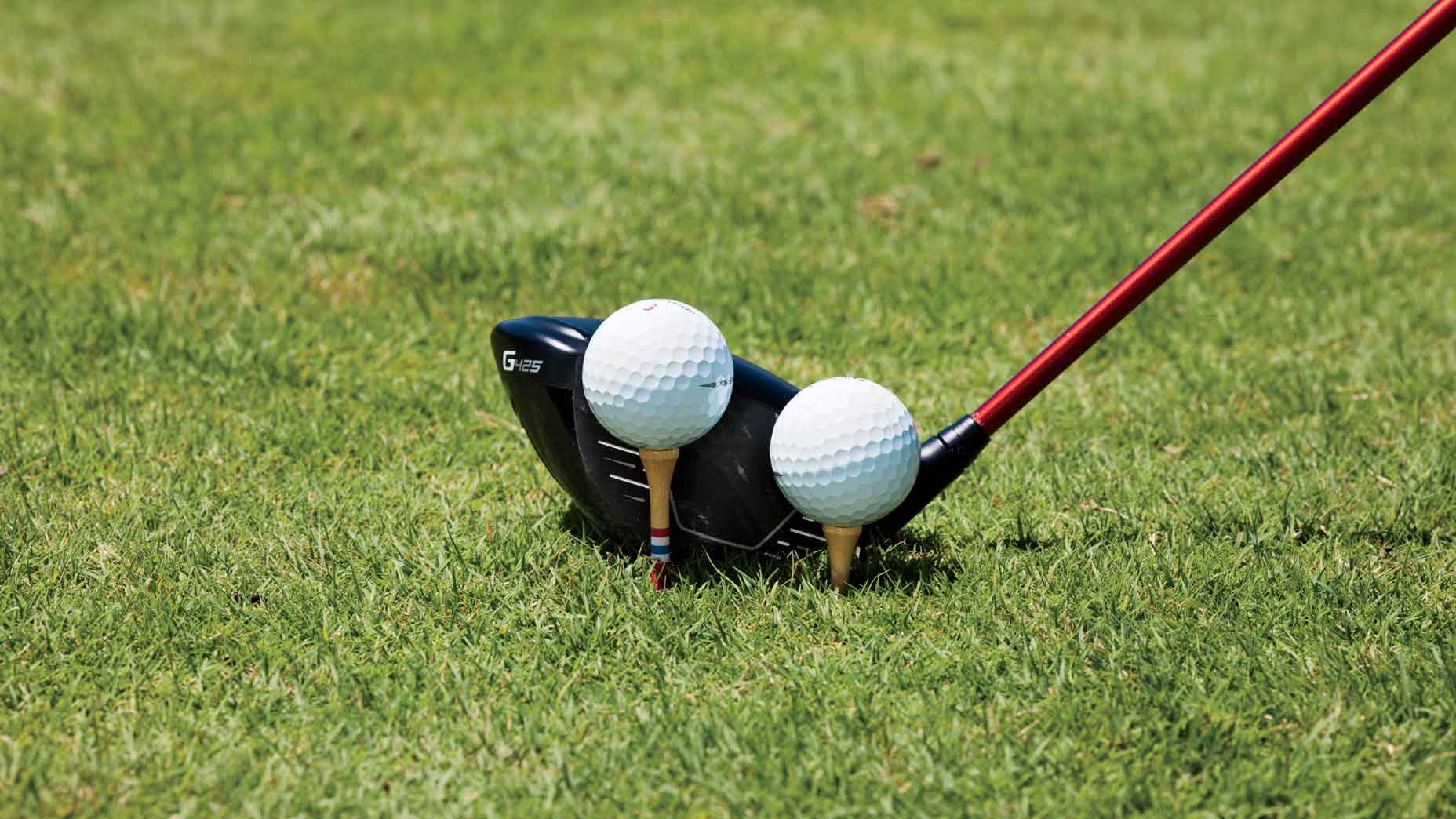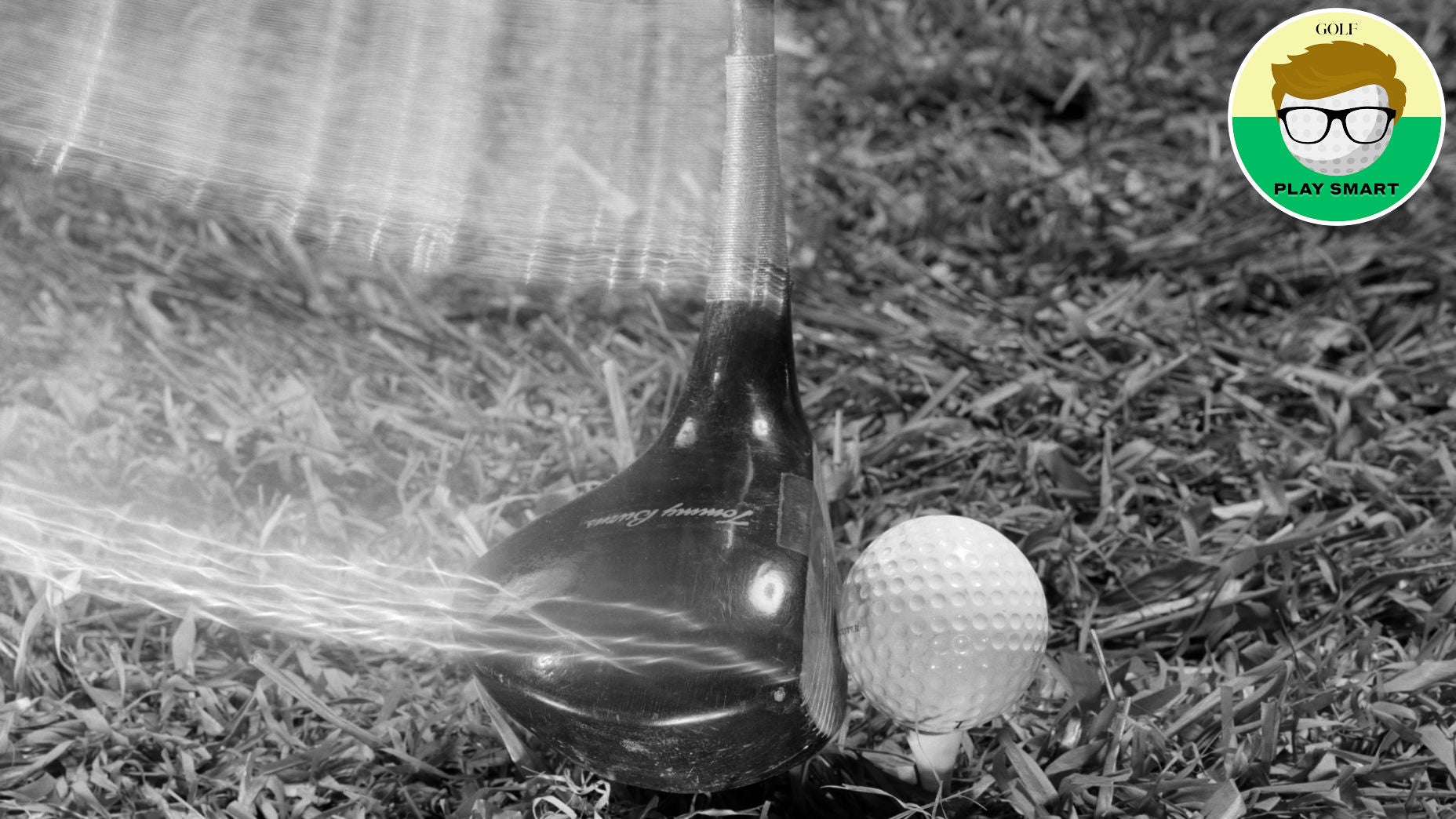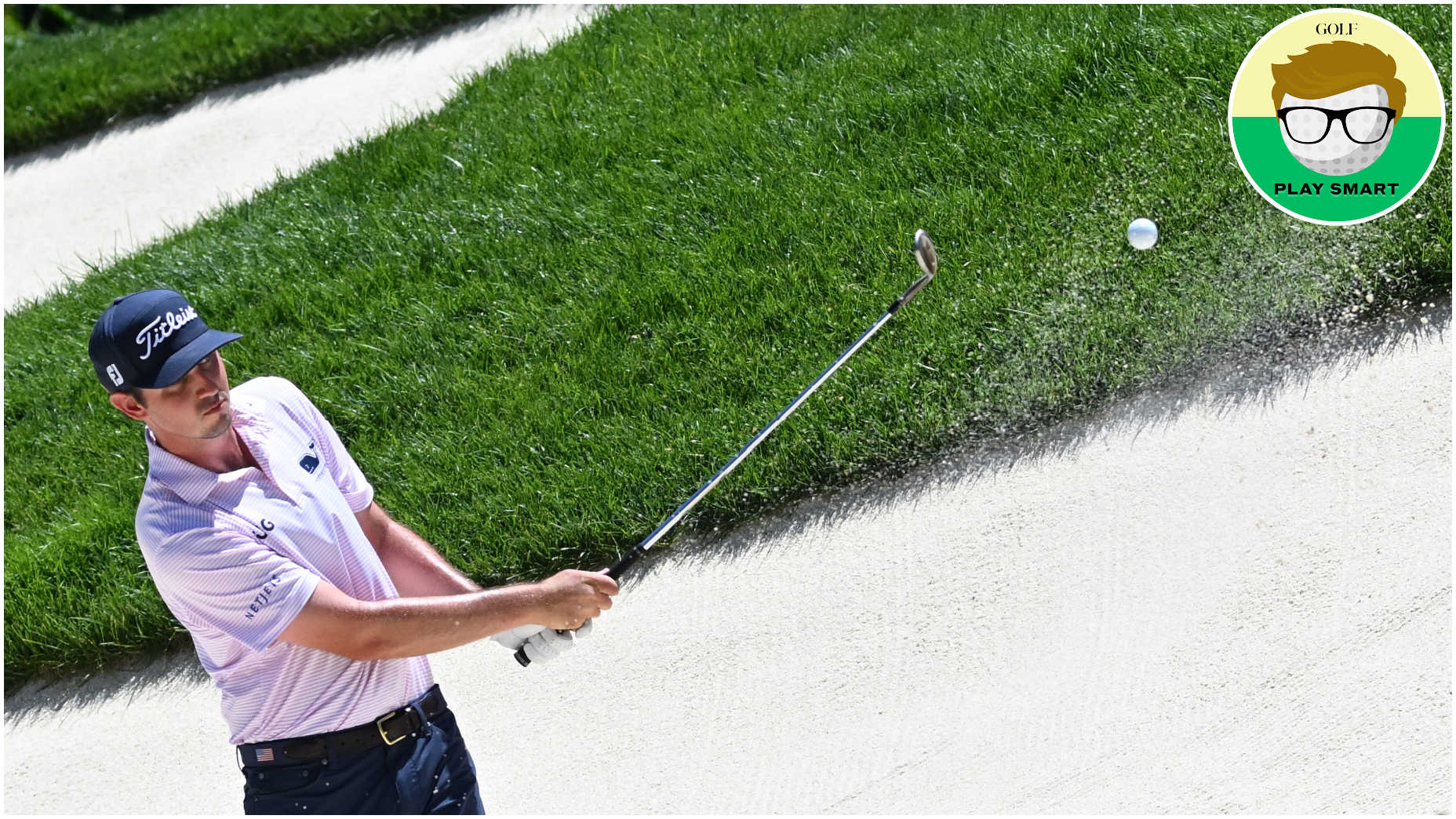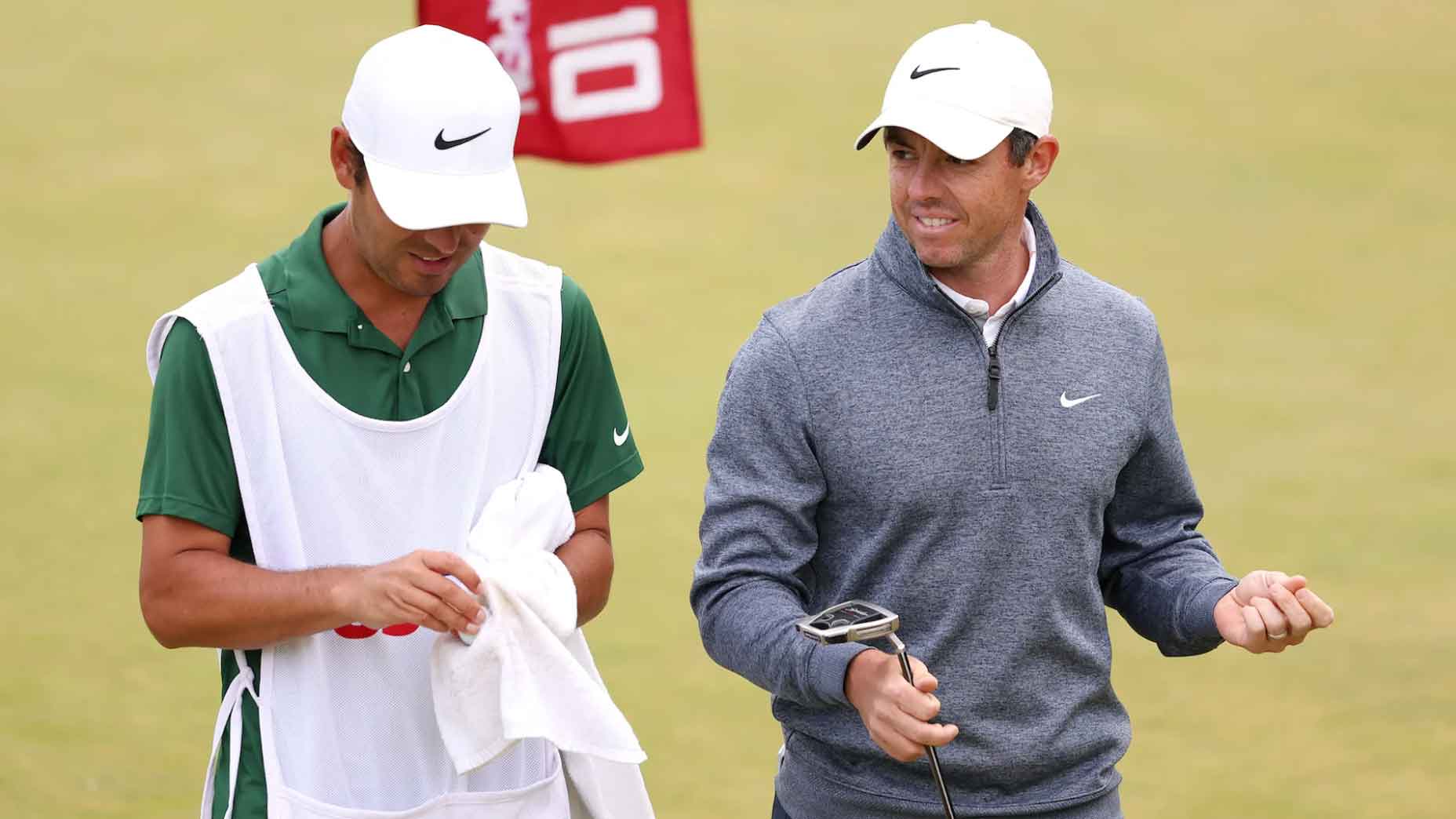1 mistake you’re making that’s causing you to crash on the golf course

Tiger Woods fueling up.
getty images
Welcome to Play Smart, a new game-improvement column that drops every Monday, Wednesday, and Friday from Managing Editor Luke Kerr-Dineen to help you play smarter, better golf.
It’s not a stretch to say that often the most important things you do on a golf course have nothing to do with the act of swinging a club. What you’re eating and drinking as you play falls squarely into that catagory.
Like most golfers, I didn’t used to care much about what I was putting into my body when I played. I’d usually reach for the nearest candy bar and gulp down an energy drink whenever I was thirsty. It was only when I started noticing my energy crashing during the latter part of my round that I took a good, hard look at my diet and realized the problem.
Turns out I was making some pretty basic mistakes that were costing me energy and strokes. It’s why this recent video from Dr. Greta Anderson, an LPGA Class A Teaching Professional, caught my eye. She started by sharing a simple rundown of the various things you can drink to hydrate on the golf course.
You can watch the full video here, or check out Greta’s chart below.

As you can see, Greta highlights the sugar, calories and sodium of nine different beverages. It’s easy, looking at this, for your eyes to drift to one column and jump to conclusions, but Greta repeatedly makes an important point: Every one of these products on the list has a purpose, depending on what you want from it. The key is consuming them at the right time and the right quantity — and that’s where I was making my mistake.
Let’s take a look at Gatorade, one of the drinks highlighted above which doubles as one of my personal favorites.
Gatorade was invented by a group of scientists at the University of Florida in the 1960s, who concocted a formula expressly designed to help athletes replenish the various fluids that they lose during physical exercise. It’s why it has some seriously valuable stuff in it, including high amounts of sodium, which helps your body retain water and keep you hydrated, along with higher levels of sugar, which can give you a quick boost of short-term energy when you need it quickly.
Both those ingredients, when used as intended, can have serious benefits. But have you noticed the number of serving sizes in a standard 24-ounce bottle of Gatorade? It has more than two. That means if you were thirsty, picking up a bottle at the turn and downing and entire bottle within a hole or two, you’re effectively hardwiring into your system 48 grams of sugar — almost 100% of your daily recommended amount — and 380 mg of sodium at once.
Over the next hour your blood sugar is going to go through the roof, but as quickly as it came, it’ll disappear. By the time you enter the final stretch of your round, you’ll probably be exhausted and not able to perform at your best.
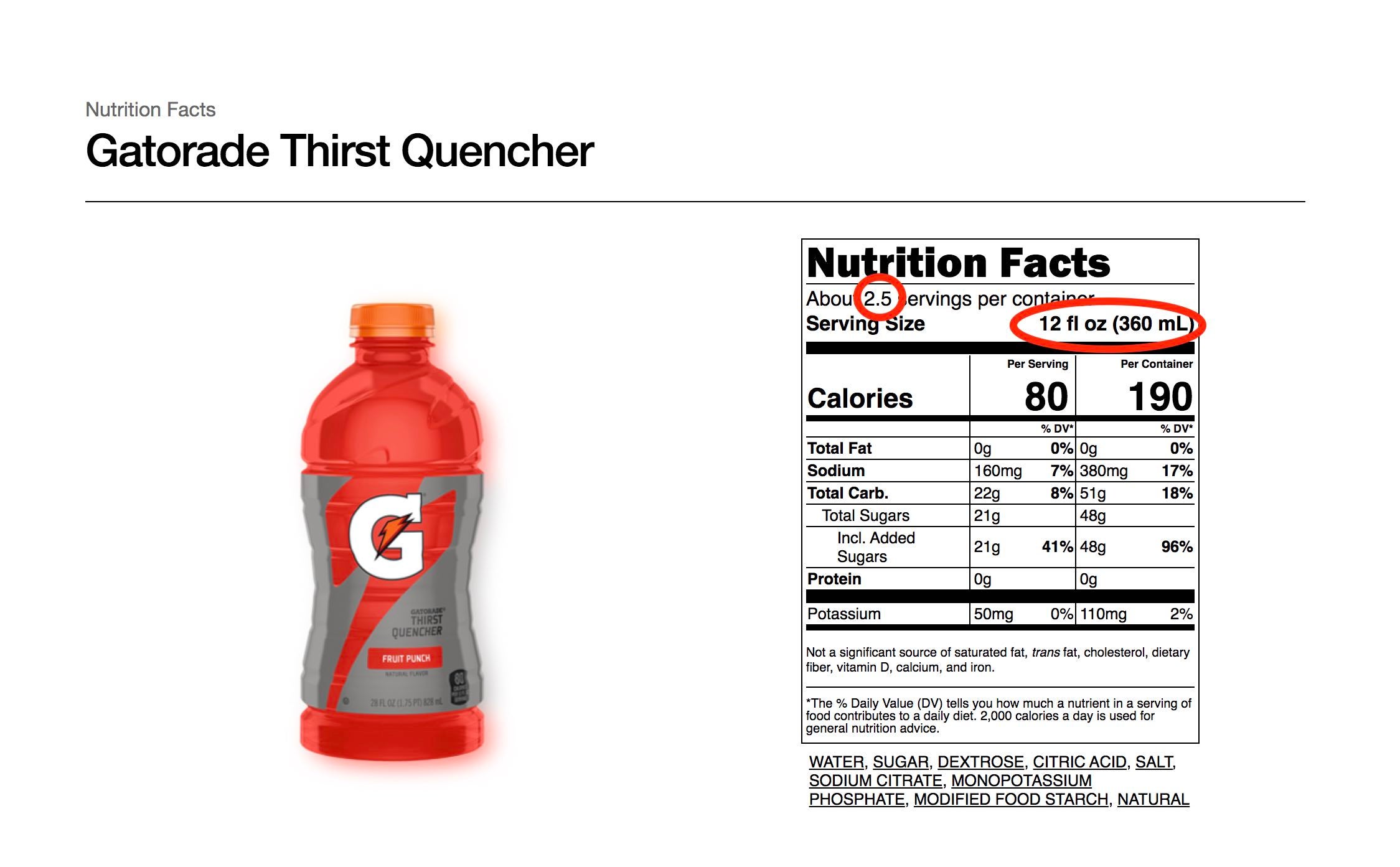
Again, there’s nothing wrong with the sugar or anything else in Gatorade — that’s the point of it. It’s a powerful formula designed for a specific purpose. The key is consuming it as it’s intended, so rather than guzzling it down all at once, buy a bottle and keep it with you throughout your round. Drink it in small doses, slowly and repeatedly throughout your 4+ hour round. Drink it alongside a bottle of water so you can keep your energy levels at a sustained, stable level. That way you’ll be getting yourself hydrated and avoiding the spike-crash cycle that can ruin your round, and cost your shots.



